With $1M budget, couple wanted to retire in a net-zero NC community. Did they find it?
For Ken and Martha Williams, moving to North Carolina would be their second — and hopefully final — move as retirees.
Both in their late 60s and married for over a decade, they’d been living in an old two-story boarding house on Tybee Island, a small coastal community near Savannah, Georgia, since they first retired in 2020.
But they craved more space. “It was a resort destination. We didn’t want to live with people on top of us,” said Martha Williams, a former IT specialist who’d spent much of her career working in Washington, D.C.
They had other “must haves”: detached, one-level, open floor plan, near a major airport and “world-class” medical care. Also at the top of their list: active solar, where they could generate their own electricity and live more sustainably.
And with a $1 million budget, they were willing to pay top dollar.
“After living on the coast, we’d become highly attuned to the threat of extreme weather events,” said Ken Williams, who is originally from Eastern North Carolina and worked as a U.S. Army chaplain for over 25 years.
They installed solar panels on their last home. “It saved us a tremendous amount of money on our energy bills,” Martha Williams said.
Cost of going green
Nationwide, green homes are gaining traction, selling faster and for more money. Boosted by tax incentives and rising prices, energy-efficient homes rated between 2013 and 2017 sold for 2.7% more than comparable unrated homes, according to a recent report from Freddie Mac. They typically cost about 5% to 7% more to build.
In 2022, after months of intensive online searching, the Williamses found Array, a 12-lot sustainable-living community under construction in Orange County, about a 10-minute drive west of Carrboro.
Off Orange Grove Road, Array sits on 58 acres of prime wooded land. It’s one of North Carolina’s first 100% net-zero energy neighborhoods. (A boutique net-zero community is also under development near Raleigh’s Village District. Prices there start at around $1.9 million.)
From high-efficiency heat pumps and water heaters to sealed crawl spaces, insulated slabs and active solar, every detail — right down to the LED light bulbs — is designed to save energy.
There’s also two and a half miles of walking trails, a pond and community garden. Roughly 31 of the 54 acres is in a perpetual easement with Orange County.
“Array is part of the solution,” said developer Jodi Bakst, a broker and owner of Chapel Hill-based Real Estate Experts, and a member of Raleigh Regional Association of Realtors. Bakst launched the project five years ago.
When all 12 net-zero energy houses are built, she estimates at least 110 metric tons of greenhouse gas emissions will be avoided each year. That’s equivalent to 37.5 tons of waste being recycled instead of landfilled each year.
And despite upfront costs, she argues it’s an investment that saves long term. As a point of comparison, installing solar costs “less than installing an in-ground pool,” she said.
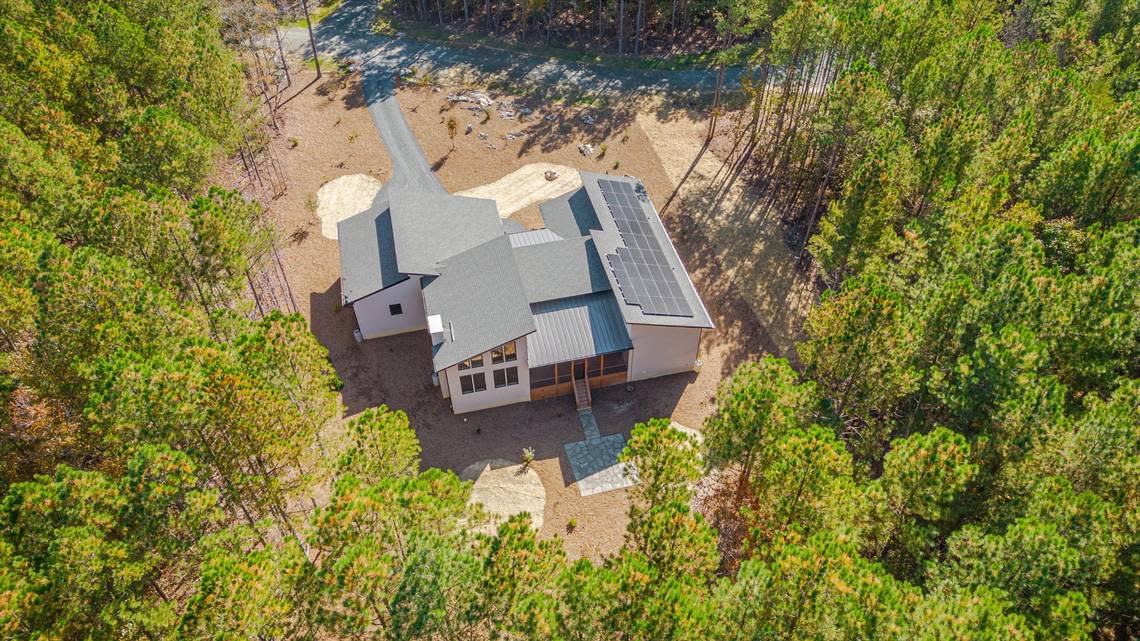
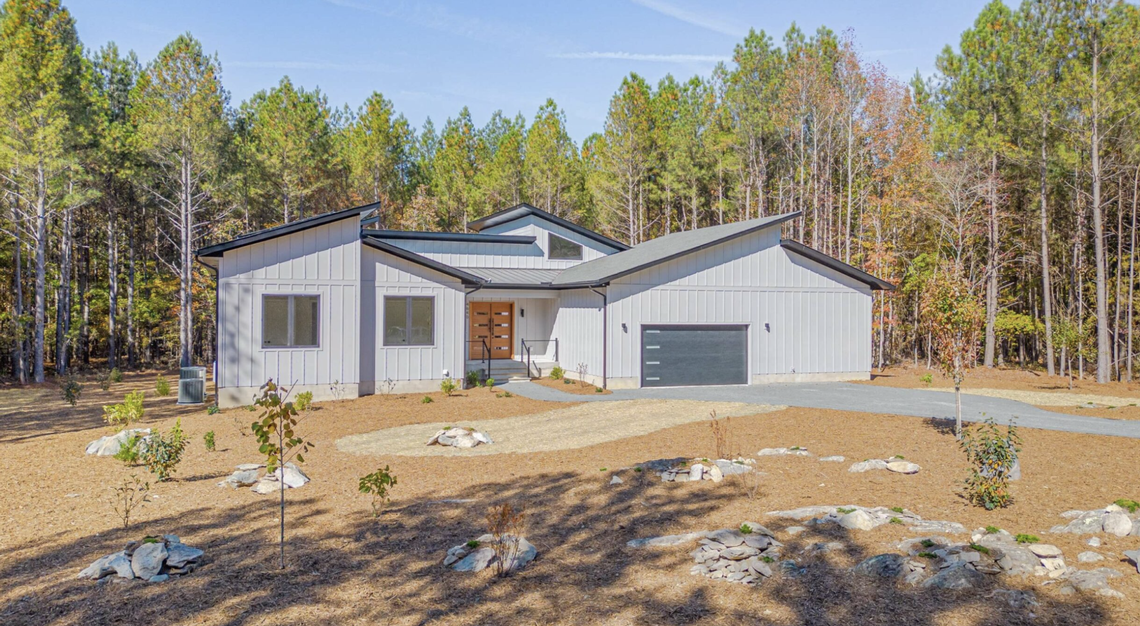
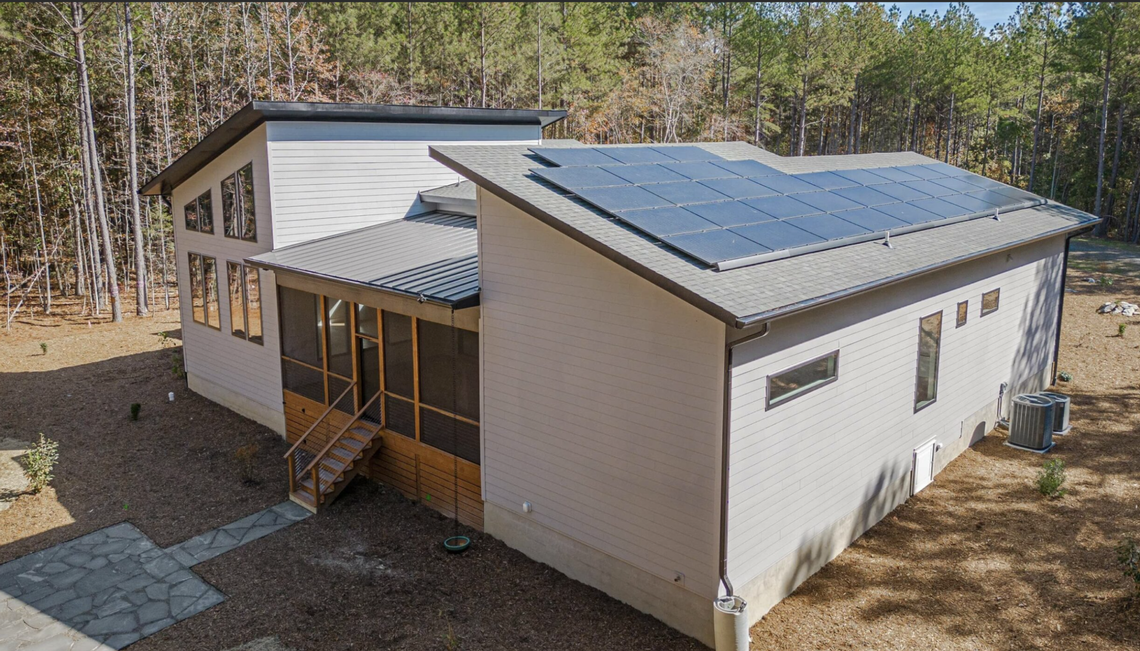
First on the block
For the Williamses, it ticked all the boxes.
After consulting with the project’s builder, Vince DeFreitas, from Cary-based Silver Developers, and touring the site in person, they closed on a 1.43-acre lot for $210,000 with 25% down, or $52,000, in late 2022. A few months later, they broke ground, the first in the neighborhood.
“We realized we could be on the cutting edge,” said Ken Williams said. “We could [show] other communities in North Carolina how to address climate change.”
For financing, they opted for a construction loan on a house priced at $825,000. (It’s a one-time close upfront and requires 20% down and a minimum 700 credit score. When construction is complete, the loan automatically converts to a home mortgage, no other closing required.)
Last October, the Williamses moved into their dream home: a 3,000-square-foot, net-zero home nestled deep in the woods at the end of a winding, half-mile Array Drive. With its jagged, uneven roof line and stone-colored siding, it rises up from the earth like a boulder.
Inside, the three-bedroom, two-and-a-half bathroom modern home is all one level, with vaulted ceilings and floor-to-ceiling windows. A giant screened porch resides in the center of the house like an atrium. To the right is a sprawling chef’s kitchen with teak-wood custom cabinets and five-star appliances. There’s also a den for Martha’s draft table. To the left, Ken’s office and the master bedroom.
“It’s like living in the woods, but with all the functional features,” he said, sitting on his couch as shards of light streaked across his living room.
“In the morning, I grab my coffee and go to the back window,” added Martha Williams. “If I’m lucky, I see deer.”
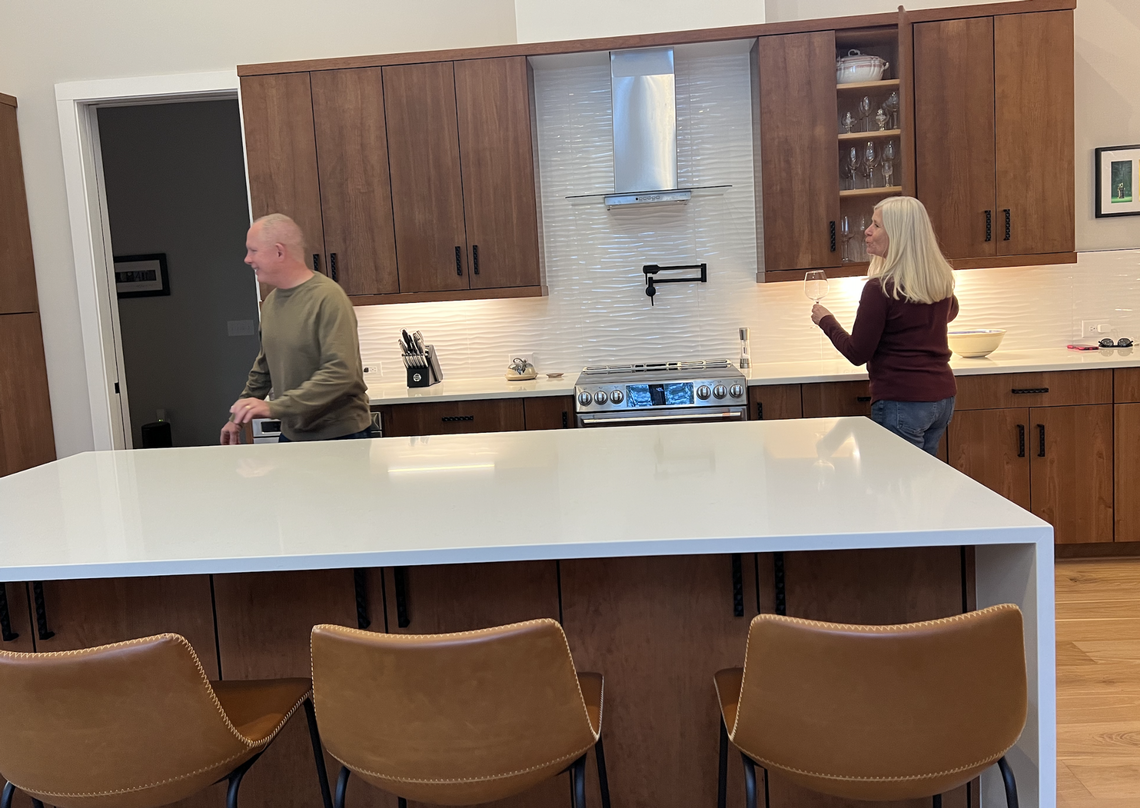
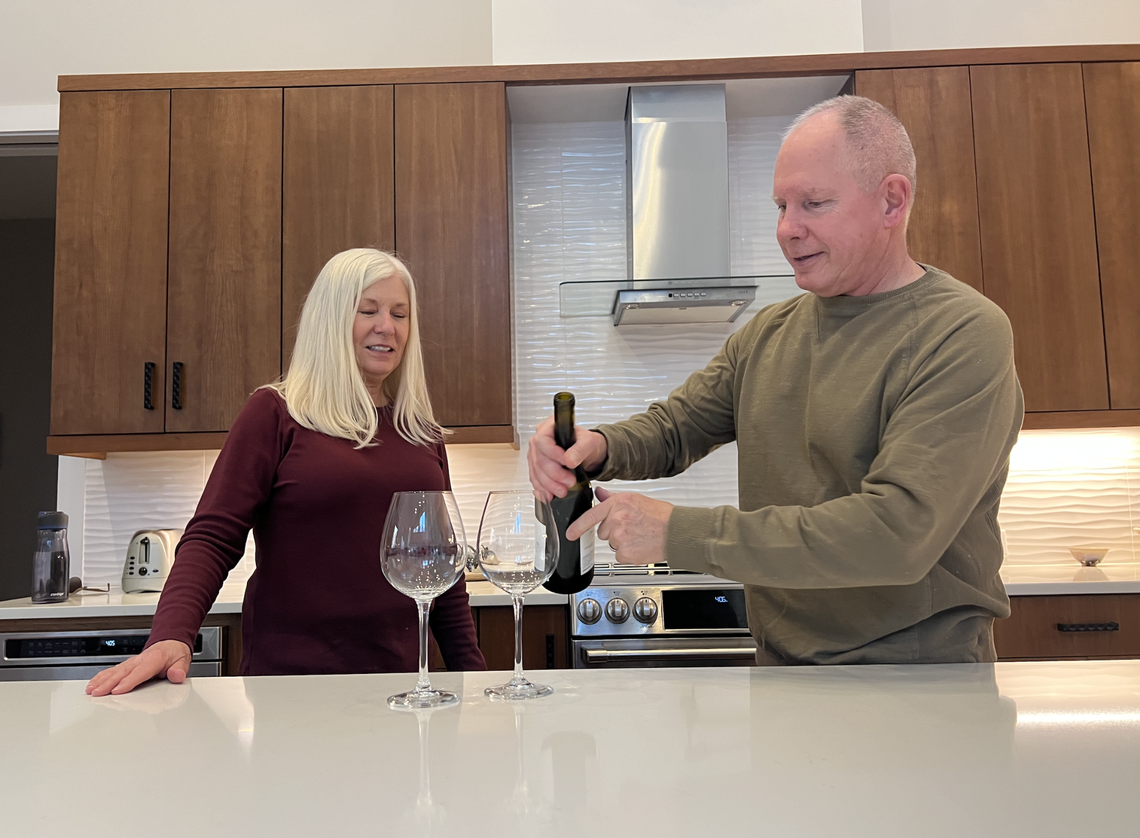
The perks of net-zero
Apart from the 13,400-kilowatt black solar panels on the roof facing away from the road, it’s hard to distinguish it from a standard home.
But its home energy ratings (HERs) tell another story.
The house has a score of -2, which means it produces more energy that it uses . (To put that into perspective, a typical code-built home will have a HERs score of 100.)
It also comes with a carbon index of -2, which means it’s expected to produce 12.7 tons less of carbon annually, and an expected annual energy savings of $3,835, relative to an average U.S. home, according to its certification.
Still, it’s too early to tell just how much they will save, the couple said.
In the first few months, after dealing with some kinks in the solar system, the first few electric bills have been around $120. But they expect them to drop to zero, they said.
They’re also waiting on certain technologies like Tesla’s Powerwall, a rechargeable lithium-ion battery system that stores solar energy for backup protection. They have concerns over the company’s well-documented mining practices of lithium and cobalt.
“We just wanted to be more confident in the ethical use of it,” Ken Williams said. “We can always add those later.”
For the time being, they’re happy to reduce their carbon footprint. They also want to grow a community of like-minded people. Five other homes are expected to break ground this year; while four lots remain to be sold, according to Array’s website.
“It’s a heavy lift to shift the status quo, but the [green movement] is picking up speed,” Ken Williams said. “We want to be a part of that.”
‘Boutique’ net-zero-energy homes near Village District start at $1.9M. What you get.
